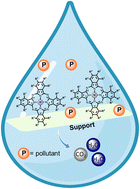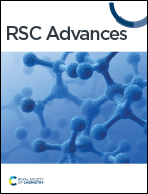Advances in photocatalytic degradation of organic pollutants in wastewaters: harnessing the power of phthalocyanines and phthalocyanine-containing materials
Abstract
Access to clean water is increasingly challenging worldwide due to human activities and climate change. Wastewater treatment and utilization offer a promising solution by reducing the reliance on pure underground water. However, it is crucial to develop efficient and sustainable methods for wastewater purification. Among the emerging wastewater treatment strategies, photocatalysis has gained significant attention for decomposing organic pollutants in water, especially when combined with sunlight and a recoverable photocatalyst. Heterogeneous photocatalysts have distinct advantages, as they can be recovered and reused without significant loss of activity over multiple cycles. Phthalocyanine dyes, with their exceptional photophysical properties, are particularly valuable for homogeneous and heterogeneous photocatalysis. By immobilizing these photosensitizers in various supports, hybrid materials extend their light absorption into the visible spectrum, complementing most supports' limited UV light absorption. The novelty and research importance of this review stems from its discussion of the multifaceted approach to treating contaminated wastewater with phthalocyanines and materials containing phthalocyanines. It highlights key aspects of each study, including photocatalytic efficiency, recyclability characteristics, investigation of the generation of oxygen species responsible for degradation, identification of the major degradation byproducts for each pollutant, and others. Moreover, the review includes tables that illustrate and compare the various phthalocyanines and supporting materials employed in each study for pollutant degradation. Additionally, almost all photocatalysts mentioned in this review could degrade at least 5% of the pollutant, and more than 50 photocatalysts showed photocatalytic rates above 50%. When immobilized in some support, the synergistic effect of the phthalocyanine was visible in the photocatalytic rate of the studied pollutant. However, when performing these types of works, it is necessary to understand the degradation products of each pollutant and their relative toxicities. Along with this, recyclability and stability studies are also necessary. Despite the good results presented in this review, some of the works lack those studies. Moreover, none of the works mentions any study in wastewater.

- This article is part of the themed collection: 2023 Reviews in RSC Advances


 Please wait while we load your content...
Please wait while we load your content...